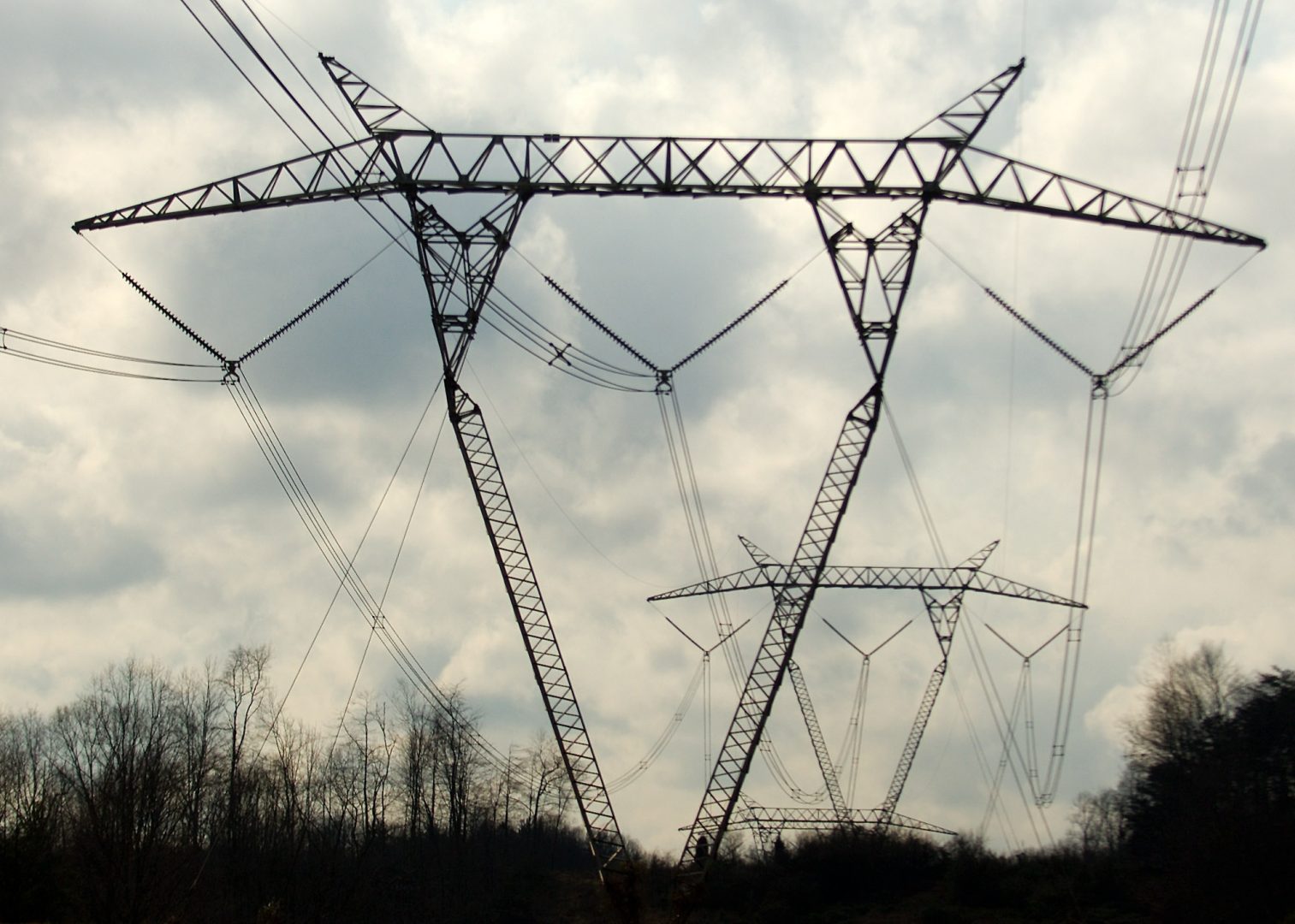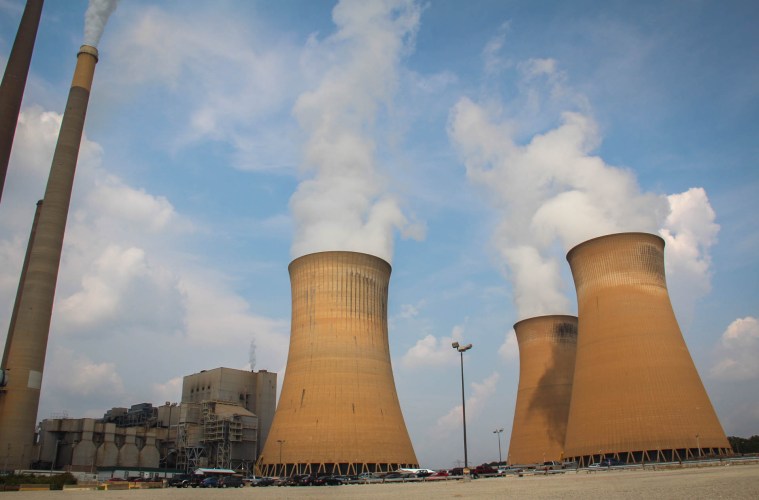
FILE PHOTO: High voltage power lines run from American Electric Power Co.'s John Amos facility near Winfield, W.Va.
Bob Bird / AP Photo


FILE PHOTO: High voltage power lines run from American Electric Power Co.'s John Amos facility near Winfield, W.Va.
Bob Bird / AP Photo

Bob Bird / AP Photo
FILE PHOTO: High voltage power lines run from American Electric Power Co.'s John Amos facility near Winfield, W.Va.
Those following the debate over whether Pennsylvania should enter the Regional Greenhouse Gas Initiative have likely heard from opponents that joining will drive up electric bills.
Some have even called the program “a regressive tax,” that will hurt low- and fixed-income Pennsylvanians.
But the state can counter negative effects, depending on what it does with money raised from RGGI.
RGGI is a cap and trade program that introduces a new price into the electricity market, so it’s possible electric rates will rise.
The Wolf Administration projects a small increase in wholesale electricity prices over the first few years in the program, then a decrease. While some may feel the change, many people probably won’t even notice.
Listen:
But RGGI’s not the only thing that affects electric bills. Harrison Fell, an economist at North Carolina State University who has studied RGGI, said many factors and other state policies have an impact.
“Trying to tease out exactly what has been the singular effect of RGGI on prices is very difficult,” he said.
Fell noted that RGGI started in 10 northeastern states at about the same time that the shale gas boom sent gas prices off a cliff.
Under RGGI, power plants have to buy an allowance for each ton of carbon dioxide they emit, raising the cost of doing business for heavy polluters. Republicans in Pennsylvania who oppose joining RGGI say those costs will be passed on to ratepayers.
But carbon allowances in RGGI have been fairly cheap so far. Fell said that a small change in production cost won’t cause a massive increase in wholesale prices.
Fell also expects leakage to dampen the effect of RGGI on prices. Leakage is when power plants outside a regulated area ramp up production to make up for decreased generation from plants inside the area.
Electric bills include the wholesale cost of generating power plus other retail charges, like for delivery and power grid maintenance.
Over the last decade, average wholesale rates have trended down in PJM Interconnection, the regional electric grid that includes the commonwealth. Meanwhile, Pennsylvanians’ average monthly electric bills have gone up, according to the U.S. Energy Information Administration. In 2009, the average bill was $98.09. It was $115.47 in 2019. The EIA does not adjust figures for inflation.

Reid R. Frazier / StateImpact Pennsylvania
Homer City Generating Station, a coal-fired power plant in Western Pennsylvania.
A Penn State report on the potential effects of RGGI shows wholesale rates will go up, a point opponents hold up as further evidence the policy is bad for Pennsylvania.
But that’s not the report’s conclusion, according to Joel Landry, who teaches environmental and energy economics at Penn State and authored part of the report.
He said they found consumers will lose roughly $2 billion over a nine-year period due to higher electricity costs. That sounds big at first, but works out to about $43 more each year in energy costs per household.
The report also found the state would raise nearly $3.5 billion in revenue from selling the carbon allowances in the same period.
“That itself is enough to compensate consumers for their losses depending upon the political will to compensate them for their losses,” Landry said.
Landry said Pennsylvania will still have lower average electricity prices than its neighbors, in part because the state exports a lot of power.
Some studies have found that RGGI can help suppress wholesale prices, because states reinvest the allowance money in energy efficiency measures that lower demand, and so, lower prices.
An Analysis Group paper from 2018 that modeled RGGI impacts over a 10-year period found RGGI-funded efficiency programs will save the region’s consumers $725 million. The study found fossil fuel power generators lose $2.2 billion.
Democrats in Pennsylvania have drafted a plan that would send at least a quarter of RGGI proceeds to clean energy and energy efficiency programs. Additional money would go to help low-income communities with bill assistance.
Elizabeth Marx, executive director of the Pennsylvania Utility Law Project, hopes a good chunk of the money will go to expand the Weatherization Assistance Program. It’s a federal program administered by states that helps low-income people make their housing more efficient and safe.
While the average residential customer pays 4 percent of their income on utilities, Marx said people at the very bottom of the income scale can pay up to a third of their pay.
On average, the weatherization assistance program saves participants $283 a year on energy costs.
Marx said beefing up the program could help the more than 1 million low-income electric customers in Pennsylvania avoid bill increases under RGGI.
“Our support for RGGI is not without caution that if you don’t get the reinvestment right and you don’t put your money back into mitigation efforts to bring low income customer bills down, that solution won’t be equitable,” Marx said.
The legislature has yet to move forward a bill to guide RGGI investments as Republican leaders oppose joining at all.
The Environmental Quality Board is expected to vote this summer on the final RGGI rule. If the state joins without legislation governing investments, the money must go to the Clean Air Fund, where it can only be used for efforts that reduce air pollution.
StateImpact Pennsylvania is a collaboration among WITF, WHYY, and the Allegheny Front. Reporters Reid Frazier, Rachel McDevitt and Susan Phillips cover the commonwealth’s energy economy. Read their reports on this site, and hear them on public radio stations across Pennsylvania.
(listed by story count)
StateImpact Pennsylvania is a collaboration among WITF, WHYY, and the Allegheny Front. Reporters Reid Frazier, Rachel McDevitt and Susan Phillips cover the commonwealth’s energy economy. Read their reports on this site, and hear them on public radio stations across Pennsylvania.
Climate Solutions, a collaboration of news organizations, educational institutions and a theater company, uses engagement, education and storytelling to help central Pennsylvanians toward climate change literacy, resilience and adaptation. Our work will amplify how people are finding solutions to the challenges presented by a warming world.